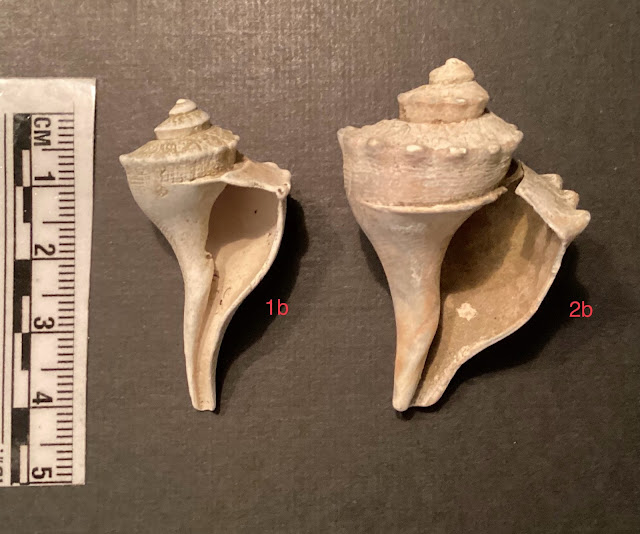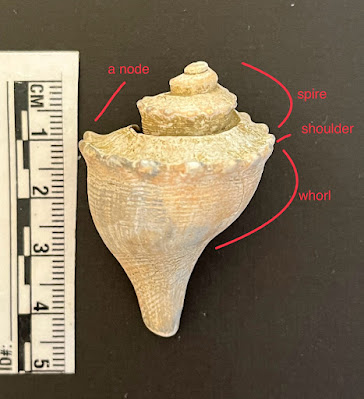With my accumulated years, the deepening gloom of late December brings a lassitude, an ebbing of motivation. Writing a new blog post at year's end seems a daunting challenge. In his old age, Walt Whitman acknowledged that, even as his heart still beat (hurrah) and the forces long celebrated in his poetry still moved him, he felt a "strange inertia/falling pall-like round me." (A Carol Closing Sixty-Nine, Sands at Seventy, included in late editions of Leaves of Grass as an "annex.")
Wait . . . that's all much too bleak. It's not hopeless. I've found that the effort to put together a post at year's end can be fueled by exploring and learning something new. And, if that doesn't provide the necessary spark, I can always resort to humor. That seldom fails and I've turned to it on more than one occasion for a December post.
At the outset, it seemed possible that one of three recent papers might help me get down to business. Here are brief blurbs about each, suggesting what I felt were some of the likely hooks in them.
#1
I thoroughly enjoyed the recent article by paleontologists Chase Doran Brownstein and Tyler R. Lyson, in which they identify a new species of fish, a giant gar, some 1.5 meters (4.9 feet) long from fossils found in the Fort Union Formation in North Dakota which dates from the Paleocene. (Giant Gar from Directly Above the Cretaceous-Palaeogene Boundary Suggests Healthy Freshwater Ecosystems Existed within Thousands of Years of the Asteroid Impact, Biology Letters, Volume 18, Issue 6, June 2022.)
At least two aspects of these fossils are striking: the size of the gar, which makes it one of the largest to have ever lived; and where the fossils were found - in the formation, a mere 18 centimeters (7.1 inches) above the K-Pg boundary (dating from about 66 million years ago) that marks the end Cretaceous extinction event. Therefore, the authors estimate that this giant fish lived only 1,500 to 2,500 years after the extinction event.
Import of that? At a very superficial level, I found it reassuring that so soon after the mass extinction, there were animals of this size going about their business. But, as the authors explain, the implications of this are actually quite profound. They describe the Lilliput effect (another of the wonderful adjectives used by paleontologist) which, based on the fossil record, shows that average body sizes in different taxa appear to decrease after extinction events. Brownstein and Lyson note that many species with large bodies went extinct in the end-Cretaceous event. Here, though, was a very large gar, an animal that could be alive only if there were an existing food chain capable of supporting it. The authors suggest two possible explanations: the freshwater environment in which this gar lived survived the extinction, or the local ecosystem rebounded rapidly after the event. Further, they surmise that, given the size of this gar, under some circumstances the impact of the Lilliput effect could be limited.
I recognized that here were some topics that might be explored in a post. For example, what other large bodied species are known to have either made it through this or other mass extinction events or that appeared soon after? What's the background on the Lilliput effect - who first applied it, what extinction event was the focus, what's the dynamic that might be behind it?
#2
The previous post in this blog focused on the fossil record of the fossorial (burrowing) response of some mammals to challenging surface environments, either through hibernation or estivation (the latter a state of torpor to cope with high surface temperatures). So I was primed for the recent article by paleontologist Calvin So and colleagues that analyzed fossils of a newly identified amphibian found in burrows in the upper Jelm Formation in Wyoming, a formation dating from the beginning of the Late Triassic, about 231 million years ago. (Fossil Amphibian Offers Insights Into the Interplay Between Monsoons and Amphibian Evolution in Palaeoequatorial Late Triassic Systems, Proceedings of the Royal Society B,Volume 291, 2024.)
The climate in the Late Triassic, particularly in the low latitudes, was brutal, a time of periods of massive monsoons, and dry periods with lethally high temperatures. So et al. posit that, without behavior adaptations, small animals could not have survived. After exploring a large collection of these amphibian fossils in their burrows, the authors conclude that this taxon had evolved to burrow into the bottom of riverbeds and estivate in order to survive the hot, arid periods. This is, they write, "to our knowledge, the first unambiguous evidence of vertebrate behavioral adaptation to extreme seasonality near the early-Late Triassic palaeoequator." (p. 8)
The fossils of this species exhibit what the authors describe as a "wedge-shaped" skull and short forelimbs. As a result, they posit that the animal dug its burrows with its head, not with its arms. Further, they suggest that the fossils found in burrows were of individuals that died during their period of estivation, before the rains returned, ending the dry season.
The article had me at the word "fossorial" in its abstract. Further, a blog post on this article might prompt much more digging into available resources on the origins of the name given the new species: Ninumbeehan dookoodukah. The name is in the Shoshone language, which is a way, the authors write "to pay tribute to the Eastern Shoshone people, their language and the land to which they belong." They note that "the name results from a collaborative partnership between the authors of this publication and the seventh-grade students from the Fort Washakie School." That partnership begged for exploration. How did it come about? What did it consist of? Is it ongoing?
#3
Geologist Marcia Bjornerud has penned a beautifully poetic essay about, of all subjects, metamorphic rocks. (Roaming Rocks, Aeon, December 17, 2024.) The story she tells is captured in the adjective in the essay title, "roaming." Metamorphic rocks are incredibly well traveled, undergoing profound transformations in the process. Bjornerud makes the journeys of these rocks mesmerizing.
There seemed to be much in the essay to inspire a blog post. At a minimum, I might search my collection of rocks and minerals for examples showing some of the transformations. Even better would be a road trip to nearby places that feature metamorphic rocks with the expectation that I could find very photogenic examples of what Bjornerud describes. I could delve into the history of what was once thought about the genesis of these rocks and how (and who) offered the actual narrative.
In any post that might come from this, I probably would provide examples of Bjornerud's graceful prose. For instance, I might draw attention to her graceful description of the metamorphic journey which begins with sediments from eroded rocks, accumulating on the seafloor, being transformed by growing pressure into mudstone and shale. Then, as she writes:
Her language is irresistible.Millions of years pass. The geography of the world changes with the neverending dance of tectonic plates. One day, the shale finds itself in the vice-like squeeze of colliding continents, folded deep into the interior of a mountain belt. The pressure at such depths is extreme. The fine clay minerals in the shale, now far from the shallow marine waters in which they formed, can no longer hold their shape. Their chemical bonds weaken, their grain boundaries become diffuse, and a remarkable transfiguration begins. The elements within, previously part of a rigid crystal scaffolding, are now free to wander. Atoms of aluminium, silicon, magnesium and iron, surprised at their unaccustomed mobility, form new alliances and reconfigure themselves as minerals comfortable at these depths and temperatures: shiny black biotite, wine-dark garnet, and sky-blue kyanite.
***
There . . . three possible jumping off points for a new blog post. Enough to shake me into actually working?
Mulling over which of these pieces seemed most promising, I wandered to my cluttered office. I sat there for a while. As I did, my attention drifted to a disorderly pile of materials on the floor; the violet cover of a journal caught my eye. Improbably, it was the November/December, 1992 issue of The Journal of Irreproducible Results: The Publication of Record for Overly Stimulating Research and Ideas (Volume 37, Number 6). (Some of the background and tangled publishing history of the JIR can be found on Wikipedia. JIR has been cited previously in this blog in a post about scientists as humorists.) I idly flipped the pages of this issue until I came upon a letter to the editor by P. Finbar Duggan, D.Sc., Ph.D., F.R.S.C., F.I.C.I., M.R.I.A, University College Cork, Cork, Ireland. I experienced an epiphany of sorts as I read esteemed Professor Duggan's brilliant missive. In a single, tightly argued paragraph he resolved the dilemma I faced with my pending post.
I quote the letter below in full:
Dear editor:I became extremely enthusiastic when I saw your call for papers for the special JIR issue on inertia. I immediately put pen to paper because I have some interest in this topic. To begin with, I had better explain why I thought it worthwhile to do so. Even though I am not really interested in inertia in all its facets, nevertheless I would be letting the side down if I did not make a contribution. For these reasons, therefore, I feel that, reluctantly, I must set out my thoughts even if they are become somewhat unfocused. I do feel the onus to








